Brutally Feminine
The Duality of Beatrix Kiddo
“That woman deserves her revenge, and we deserve to die”
Budd, Kill Bill: Vol. 1
Beatrix Kiddo, a blur of rage and divinity. Gasping for air as the spray of bullets fly through the the small El Paso church, the weight of her blood-soaked wedding dress pulling her to the floor, she looks at the father of her child as he shoots her at near point-blank range. Captivating and chilling, Beatrix Kiddo is Quentin Tarantino’s most poignant exploration of duality.
The duality of feminine and masculine powers demonstrated by Uma Thurman is nothing short of shocking. Her wardrobe, mixed with the emotionally of cinematic drama, combined to create some of the most unbearably mesmerizing scenes in modern day cinema. Beatrix Kiddo is the embodiment of both the brutal and the feminine, forcing us to understand the psychological depth of the woman behind the wheel of the Pussy Wagon.
The Feminine
Beatrix Kiddo’s revenge is deeply emotional, driven by loss, betrayal, and maternal instinct. Her femininity is not conveyed through a conventional lens, but through her emotional depth that drives her every action, and governs every choice.
The Wedding Dress:
The white wedding dress is the siren call Kiddo is unable to resist; the symbol of her longing for a peaceful, family-centric life. It’s a fragile, ethereal representation of her vulnerability, accentuated by delicate lace and softness of voice in these scenes. The black and white cinematography romanticizes this feminine lens; the purity of her white gown standing in sharp contrast to the violence she suffers and the massacre she seeks in retribution. We understand the humanity inside of her rage — we feel catharsis in her search for justice. We root for her: she is not the villain. She is our hero.
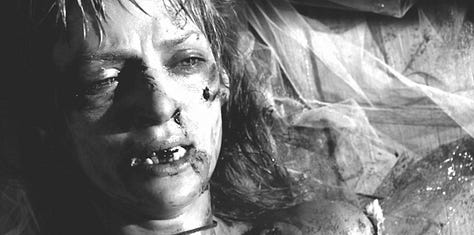
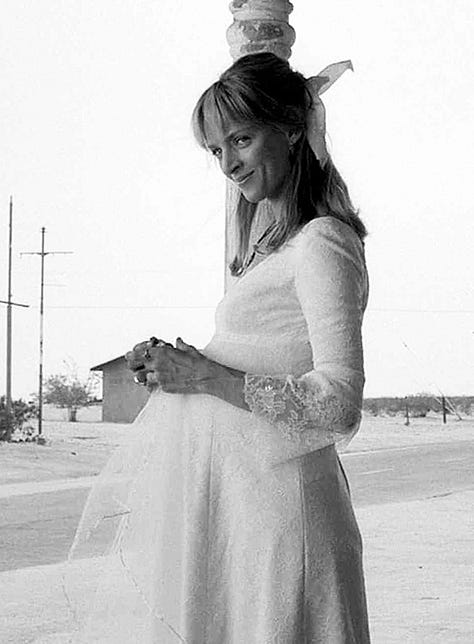
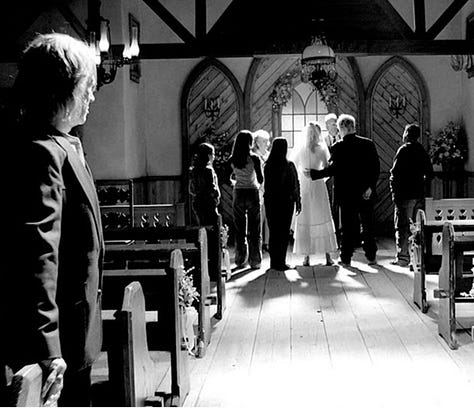
The Yellow Tracksuit, Fight with Elle Driver
A brilliant range of femininity is captured in this scene. Kiddo embodies grace under threat of death, maturity in her skill and the patience to meet her end goal before her emotions override the logic a fight-to-the-death requires. Elle represents a more vicious femininity: outwardly she is poised and beautiful, aware of her allure and wit. Inwardly, she is driven my malice and the illusion of power through violence. The Black Mamba vs. The Viper. Their wardrobe underscores this dichotomy — Kiddo’s iconic yellow track suit reflects her dedication to a singular goal, while Elle Driver’s suggests a false innocence, hiding her deceit and cruelty inside purity that white proclaims. The clash is not just physical but symbolic, pitting the integrity of a mother’s love against the arrogance of assumed power.
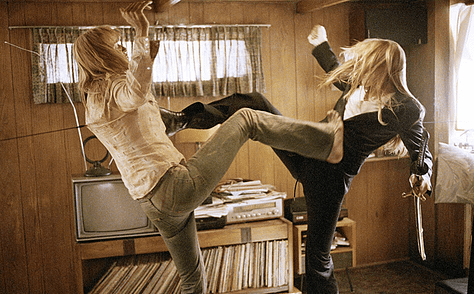
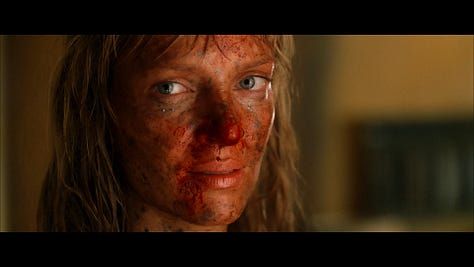

The Masculine
Kill Bill is a yin-yang exploration of paradox, revealing that deeply loving emotions can manifest in brutal violence. Kiddo’s emotions and self-control under pressure are inherently feminine, while her will and force of rage is strikingly masculine. An assassin doing everything out of love for their child, the sour and delicacy of biting into a lemon.
The Cruel Training Under Pai Mei
Beatrix Kiddo was a disciple of Pai Mei, her sifu (師父). Her transformation under his teachings are brutal. The unforgiving methods Pai Mei teaches are born from the hyper-masculine ideal that pain is a means to strength. She is relentlessly berated and humiliated, yet she endures it all. Stripped of any notion of femininity, through her devotion to perfection and through Pai Mei’s deep loathing of women. In the end, she transcended even her Master’s notion of masculinity, weaponizing her knowledge in her violent quest for revenge. Beatrix Kiddo embodied the age-old rite of passage for men: survival through suffering, strength through discipline, dominance through conquering her limitations.


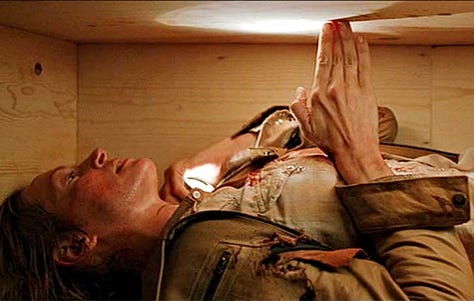
The Hattori Hanzō Katana: The Samurai Sword made just for Her:
An overly masculine symbol, the samurai sword crafted specially for Kiddo represents honor, precision, and discipline. Habits necessary to inhabit the world she lives in, essential to master to achieve her ultimate goal. While usually phallic in meaning, in the hands of Beatrix Kiddo this weapons transcends into an instrument of brutal devotion. The sharp juxtaposition of the sword against her sleek, minimalistic outfits heightens the contrast of her feminine beauty and maternal instincts with the brutal masculinity of her craved violence. As the blade cuts through the air, it mirrors the beauty and deliberation of her movements. Kiddo moves through each challenge with confidence and grace, embodying both worlds of the masculine and feminine without ever being confined to either.
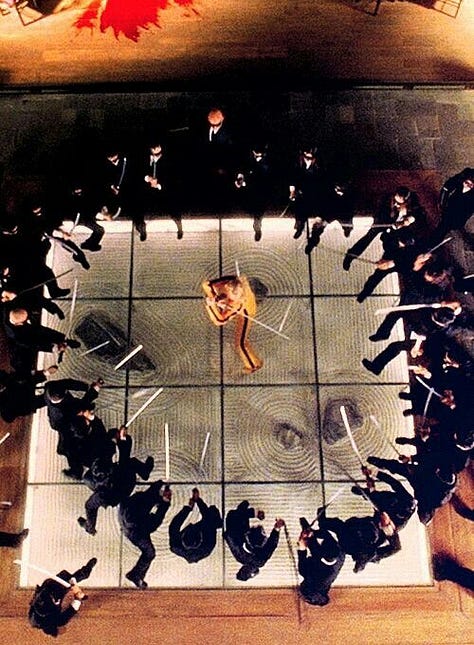
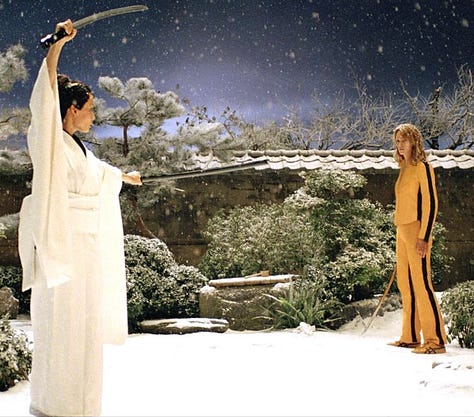
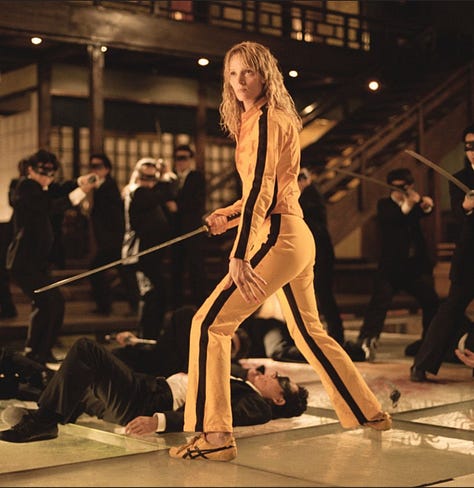
In conclusion:
The savage grace by which Beatrix Kiddo executes her duty to honor her child is a wonder of duality. Deeply feminine in her emotional devotion, while profoundly masculine through her unwaveringly endurance. These elements together bring Her to life. They gave us then, and continue to give us a now, a different way to look at a mother who would do anything for her child. The duality of masculine and feminine coexist within Beatrix, making her a multi-dimensional character that everyone can identify with.
Critically Yours,
Alexandra Diana



